A stack of herbal and art (The boundaries get fuzzy!) journals that saw heavy use in 2024, with my studio-in-a-pouch perched on top ready for adventuring.
I’ve been keeping journals of one sort or another for as long as I can remember. Call them notebooks, diaries, sketch journals, whatever; I have a penchant for scribbling and recording my experiences in one way or another. It feels only natural at this time of the year to reflect on what worked and what I might want to change for the coming year’s herb journaling. I thought I would share that process here on Substack for my final Folk Herbalist’s Journal publication for 2024. Whether you’re a life-long journal keeper or a budding novice, read on as you consider ways to chronicle your adventures with the plant world.
One thing that’s obvious from the photo above is that I trend heavily toward traditional bound journals of various sorts. I used to almost exclusively use EcoQua 100% Natural 8.25” x 11.7” 40-sheet stapled notebooks. I liked the size, the quality of the paper, and the fact that they would lie flat for drawing. Sadly, they have not held up well for long-term use and storage, so all my herb journals of this type are heavily taped and glued and repaired. I honestly don’t mind that much because I like that well-used, lived-in look. I’ve always thought a carefully preserved, pristine journal is one that hasn’t seen much action out in the field or in the studio. The fact that these journals are almost as affordable as cheap spiral bound notebooks is also a plus. The EcoQua notebooks are unlined, which is non-negotiable for me. If you’re more of a poet or prose writer or a songwriter, you will want a very different type of journal, of course.
I used to exclusively buy cheap notebooks because I felt more comfortable experimenting, doodling, and hauling them around in my knapsack. A lovely, tooled leather journal with premium quality paper felt too precious to use for anything less than masterpieces, which don’t really interest me. I like a notebook that doesn’t mind roughing it and is not offended by smears of wild Wineberry juice or smudges of Black Walnut. But I’m more flexible now and like to try different sizes and styles of notebooks.
One caveat is that the big box craft stores seem to be carrying some very inexpensive bound multi-media journals with elastic bands that mimic the more expensive “moleskin” notebooks. I bought a couple, which I continue to try to coerce myself to use. They don’t hold up well to even casual use in the studio and would probably fall apart in the field. The paper is thinner than cheap copier paper, which I sometimes get around by gluing two pages together or by pasting heavier cardstock onto the pages. I’ve compromised by taking greater care with these notebooks, but I have ended up reserving them for experimentation and scrapbook style entries. What it means in practice is that I don’t use them much.
I purchased two of these “bargain” journals at a big box art supply store last January at 2 for $5. The old saying that you get what you pay for applies here. Despite attempts to bolster the flimsy covers and paper, these were disappointing and frustrating to use.
I received a lovely leather-bound journal with hand-sewn signatures of quite good quality multi-media paper. It’s about 6” x 8” and I feel a bit like a Hobbit leaving the Shire for some grand adventure when I use it. This one is equal to the task for any trail work and the pages are thick enough for ink, paint, or whatever medium I choose to use. Despite the durability factor I have mainly used this one for experimenting with different techniques and tools. It just feels like a personal book, so I have kept most of the contents private. While most of my herb journals are shared both locally with friends and on the internet, this one remains one reserved for play. Sometimes, it turns out, having a special book can invite unique explorations and greater intentionality with my entries.
Playful, less goal-oriented explorations are what happens in this handmade journal. Papercuts overlaid on watercolor or neurographic designs…anything goes. PLAY is the name of the game in this notebook.
Last year for the first time, I tried a bound watercolor journal because I wanted to practice using watercolors more. What I discovered is that I like watercolor paper for all sorts of mediums from colored pencils to pen and ink. I like toothy paper that provides natural variations in pigment and texture. I don’t particularly like it, however, for writing text on, so if you primarily use words in your journals, you might find the drag and friction slows you down. But if you plan to paint or draw, these sturdy journals are delightful. The ones I used this past year were U.S. Art Supply 5.5” x 8.5” 110 lb. cold-press watercolor paper (76 sheets), linen bound with an elastic band closure. They were around $15 for a two-pack online. This size fits well in a knapsack or satchel and the sturdiness of the covers acted as a natural easel, which made drawing and painting in nature a breeze. Sometimes I don’t like bound journals because of the crease and hump that is hard to work around and is often uncomfortable to write or draw across, but last year I had fun using that as an element in many of my art explorations.
I have a fondness for drawing across creases. One of my photographer friends pointed out to me that I appear to like defining a boundary and then defying it. Funny but true!
After discovering that I really like watercolor paper for almost all purposes except for handwriting, I decided to go completely unbounded and purchased a block of loose watercolor paper. I started with Strathmore cold-press 140 lb. 9” x 12” sheets but I plan to experiment more with both hot and cold-press in different weights. This is probably the most affordable way to purchase good quality watercolor paper and there is basically no waste since there is no binding or spiral wire. I use an old artist’s portfolio of my son’s for storing finished pages. Another way that I use these solid blocks of watercolor paper is to cut them into palm sized squares and tuck a stack of them in my studio-in-a-sack. When I go out all I have to do is grab my sack and head for the woods or fields. These small studies can be rough sketches, or they can be detailed miniature drawings that I can paste into a larger journal when I get back inside.
Loose-leaf paper in your favorite type and size can be stored in an artist’s portfolio to create a flexible “journal” that can be arranged and reorganized to suit different needs at different times.
“Inchies” are palm-sized squares of watercolor paper cut from larger sheets that are handy to carry along anywhere for doodling and small studies.
In this final month of 2024, I’ve become intrigued by the entire concept of seasonality. That’s no surprise given that nearly all my herbal studies emphasized connecting to the natural rhythms and cyclical nature of this garden planet. Maybe it was fate that I came across a tutorial from Marion’s World about making beautiful circular Phenology Wheels. It’s much easier than you might imagine and there is no measuring. All you need is a piece of paper, a ruler, pencil, and a compass. I’ve already drawn up one for January and I have plans for a round journal of monthly phenology wheels for 2025. Click here to learn to make your own:
MARION'S WORLD PHENOLOGY WHEEL TUTORIAL
All set to start on January 1st with my first Phenology Wheel!
I still haven’t 100% decided about the focus for the January Phenology Wheel, but contenders include: Things Evergreen, Twigs, Sky (using a cyanometer), or Tiny Worlds. I admit that I am leaning heavily toward Twigs. I like drawing twigs, and I want to learn more about identifying trees and shrubs in the winter. It’s so easy to think that all twigs are the same but they’re as different from tree to tree as leaves are during the active growing season. My priority with each Phenology Wheel this coming year will be all about noticing, observing, appreciating and generally increasing my awareness of nature and the seasonality of life. For this reason, I will be combining my woodland treks and info gleaning with Susan Wittig Albert’s monthly newsletter Growing Green with the Zodiac, which you can access here: GROWING GREEN WITH THE ZODIAC
There are some lovely herbal coloring books available for those who struggle with a blank page as a starting point. Also consider making collages or scrapbook-style journals from the plethora of seed catalogues that fill our mailboxes this time of year if drawing or painting don’t interest you.
I change the contents of my Studio-in-Sack from time to time depending upon what medium I am most focused on. I keep it packed and ready to go all the time so I can just grab my current journal and the sack and head out the door. This is handy not only for woodland rambles but also to carry along if I am going to be sitting in a waiting room for an appointment or while getting an oil change on my car. Doodling is much better than doom scrolling! This is what my sack contains at the moment:
· Waterproof ink pens (Microns but I am considering investing in one Lamy or another fountain pen.)
· Faber-Castell Polychoromos colored pencils
· 2 regular #2 pencils
· Pencil sharpener
· Tortillions for blending and shading
· Erasers (kneaded and regular)
· Small pair of scissors
· Palm-sized squares of watercolor paper
· Daniel Smith Watercolor travel kit (Primaries plus Umbers)
· Waterbrush (with water in the barrel)
· Tiny spritzer bottle for activating paint
· Favorite Hag stone
Pared down art tools that all fit in a hand-sewn sack with an upcycled zipper make a fun, art-anywhere-anytime Studio-in-a-Sack.
There is no question that we are facing big challenges in the coming year. Reminding myself of the goodness and the regular returns of Nature is grounding that I will need. I will continue to keep my traditional herb journals, but I also plan to explore new mediums and think outside the box by creating my own handsewn and bound journals from materials at hand, like paper grocery bags, old books with broken bindings, junk mail and newsprint.
What nature adventures do you hope to explore in 2025? Is journaling part of your self-care practices? I’d love to hear what works for you. Please feel free to share your experiences, thoughts, and ideas in the comments.
I’ll be embracing this in-between time as one year comes to a close and the next begins. For me, it is a time to pause and reflect on the past year and consider what is worthy of carrying forward, what to discard, and what needs to be changed. I will be back in mid-January with new Folk Herbalist Journal sharings, and I’m sending wishes for a new year of natural wonders and simple pleasures to each of my readers. Thank you so much for your support and encouragement this year!





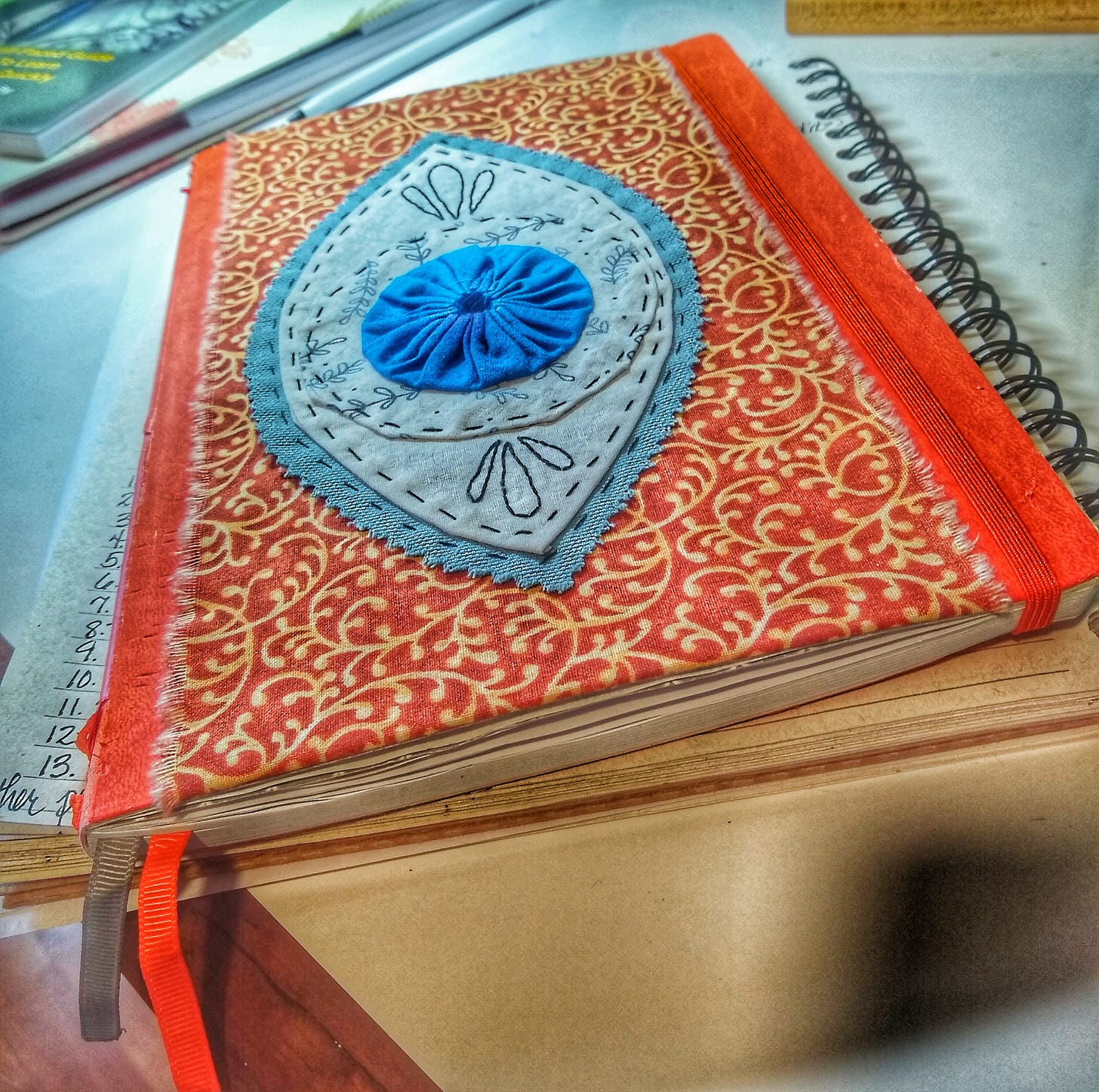
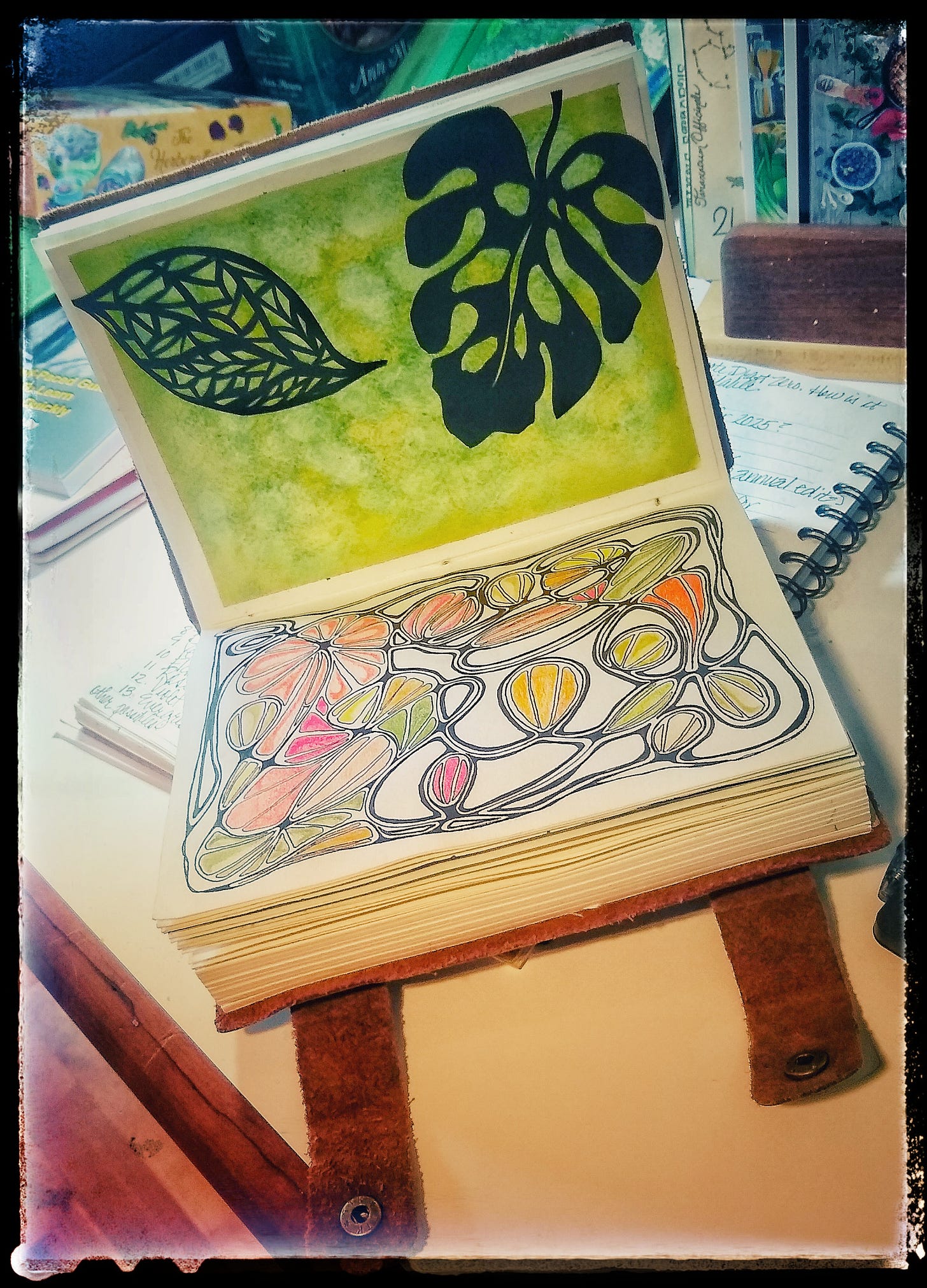
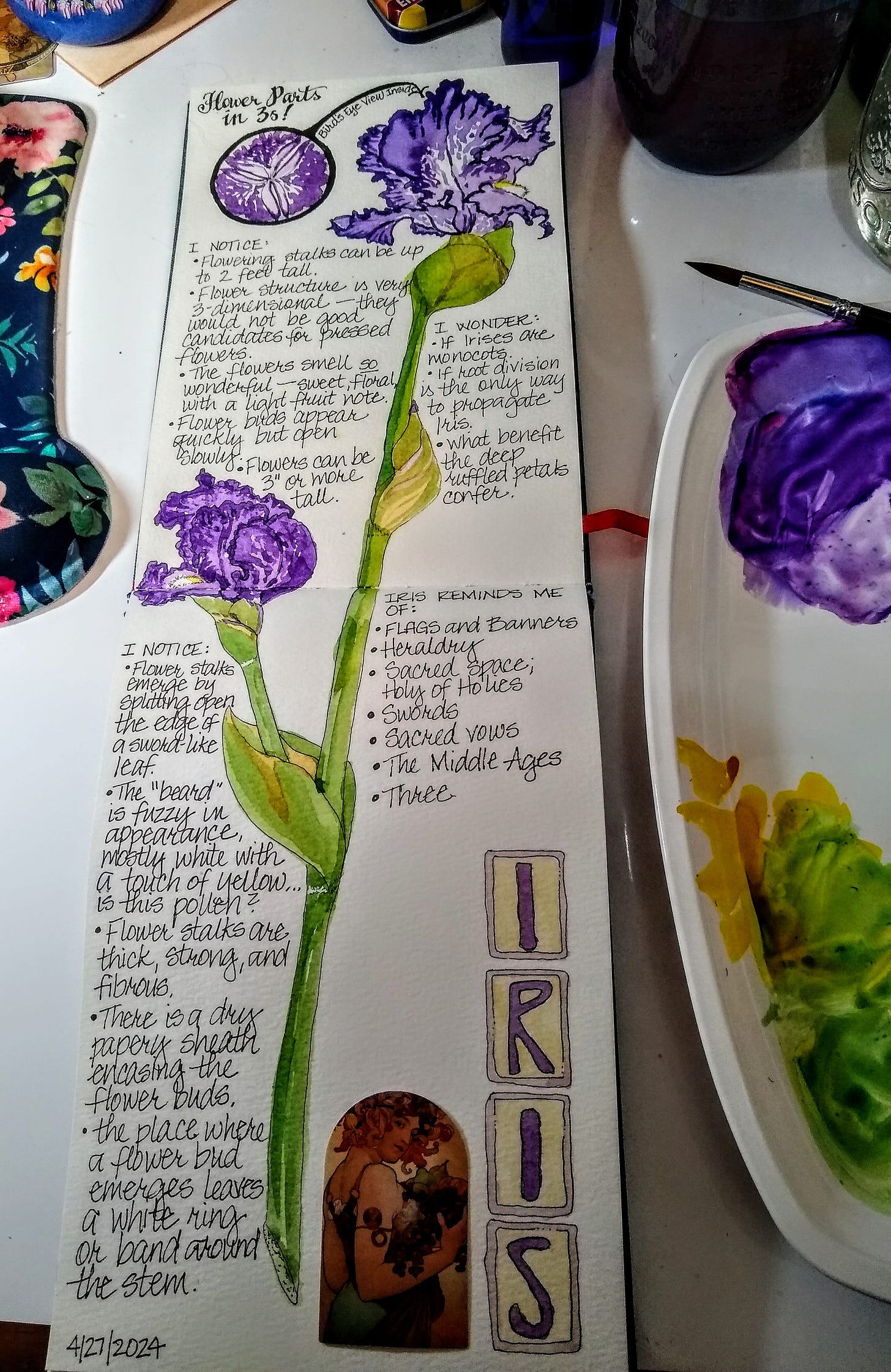
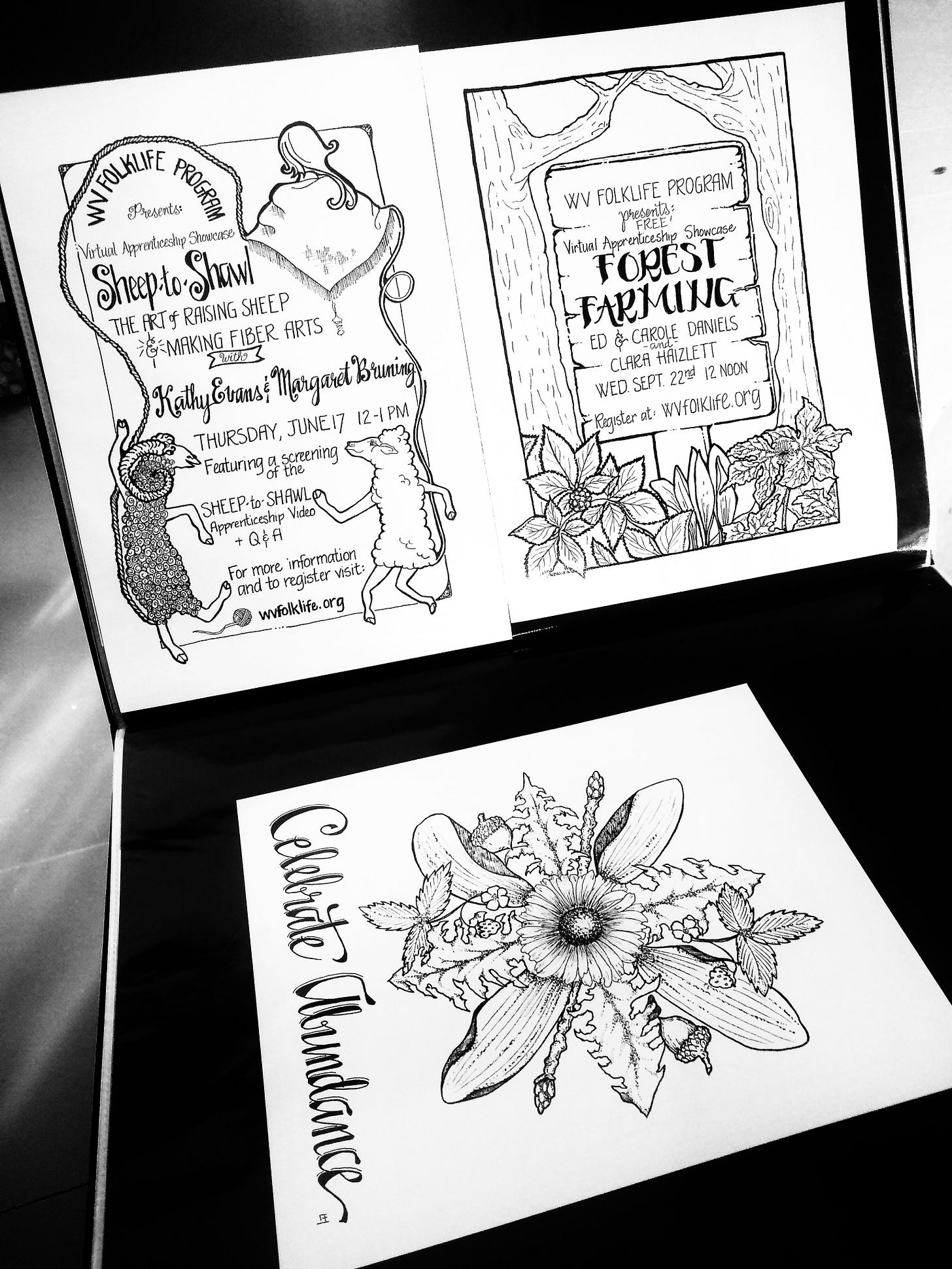
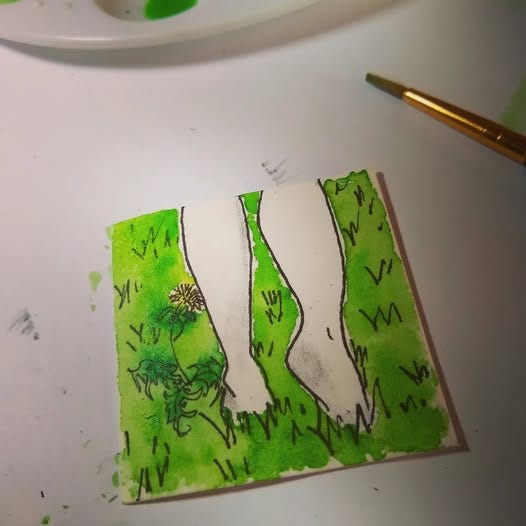
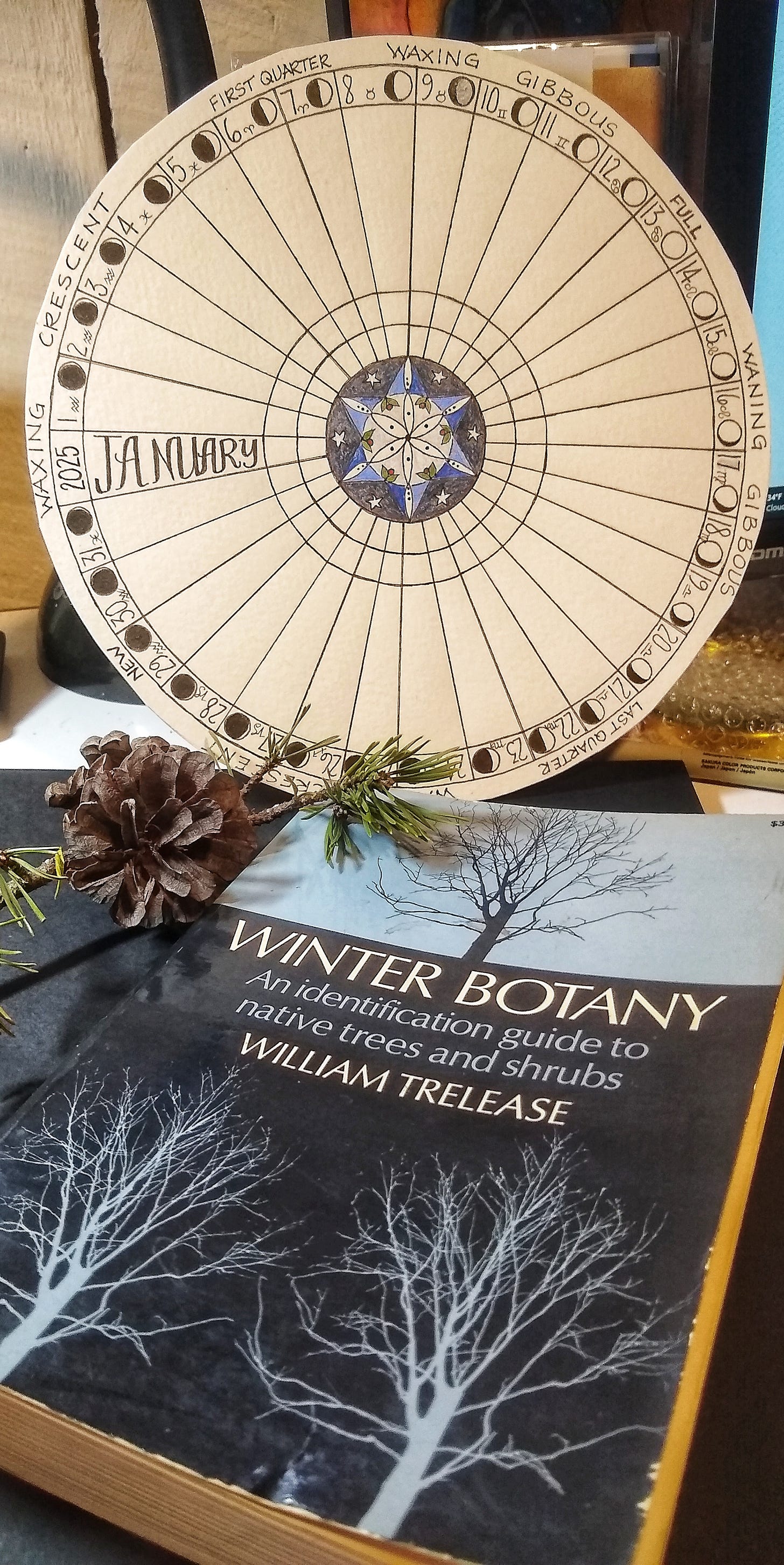
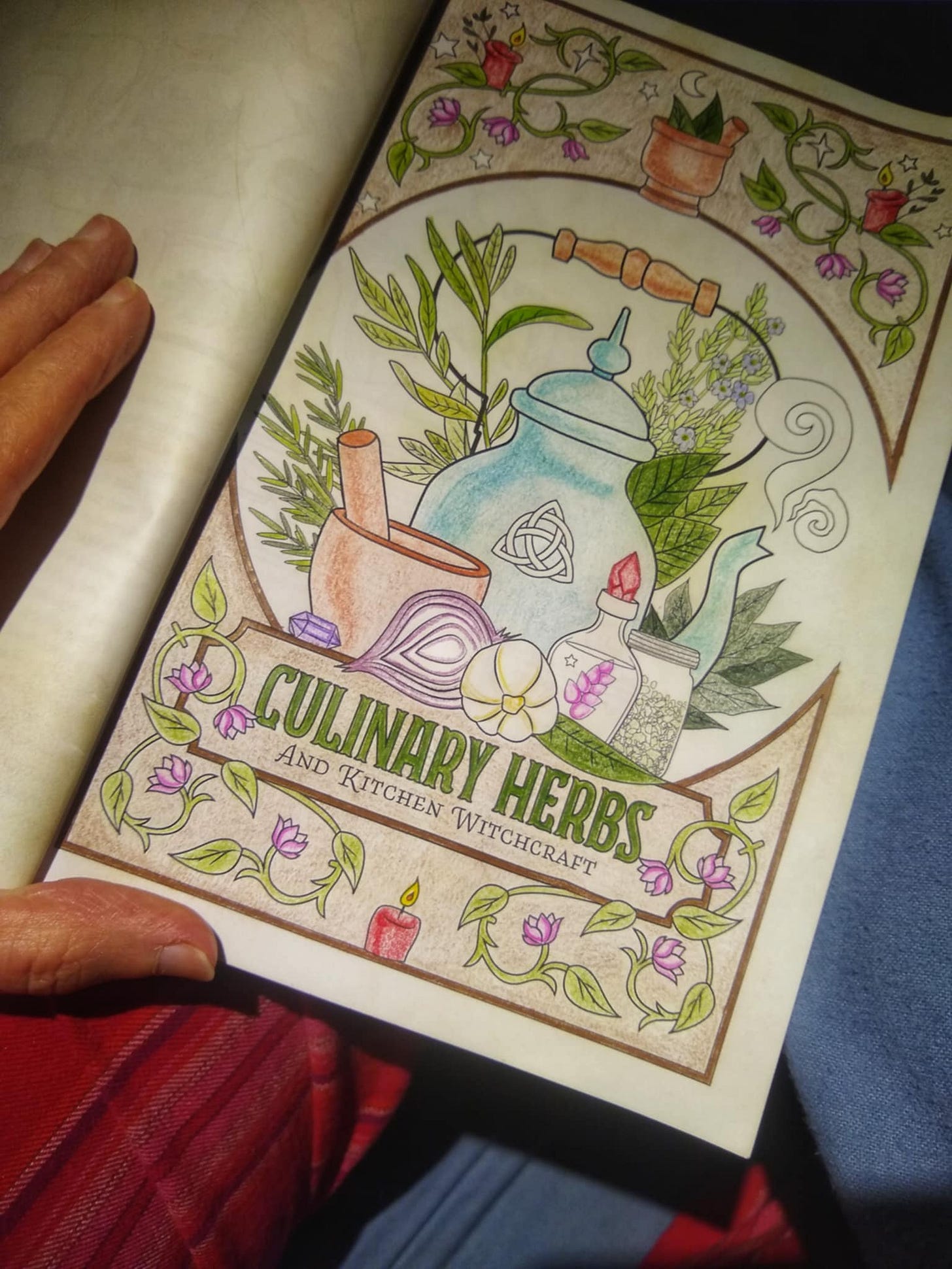
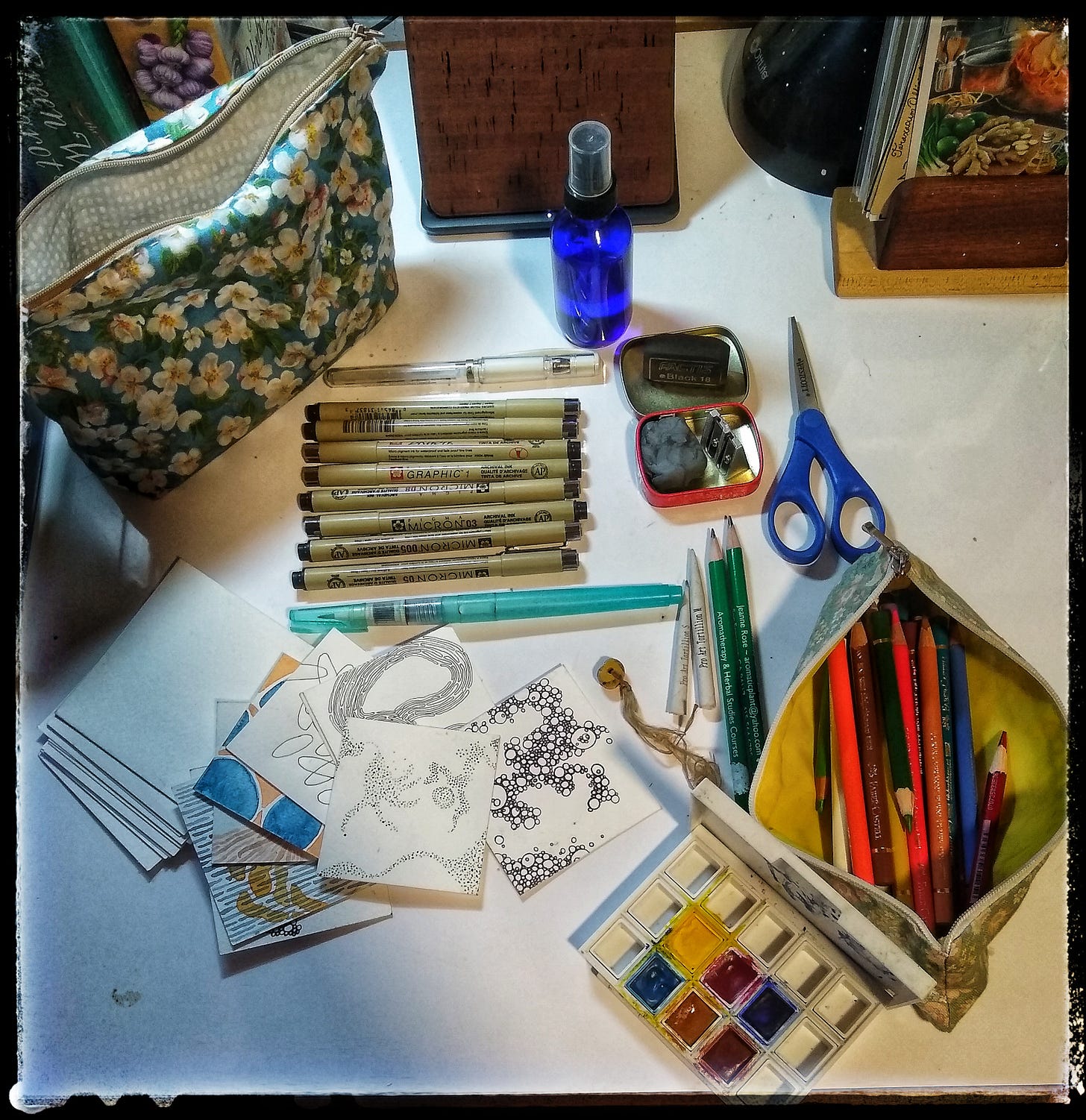
Thank you for sharing your journals, they are inspiring. I like the delusions journals for my art journaling. I do have cheaper ones I use and of course my nighttime journal where I do a short resume of the day. I’m trying to Destash things I’ve not used in a long while or won’t use again. Clothes, yarn and currently 2 electric spinning wheels. Making space to think in and hopefully enjoy creating more.
What a wonderful essay! I am embarrassed to admit that I have many supplies but have failed to follow through with any artistic journaling. I have some journal drawings from my early herb learning days but stopped after that. The phenology wheel is gorgeous and I do simplified version using composition books. I record the date, temps, weather conditions, animal sightings and visits, and plant appearances.